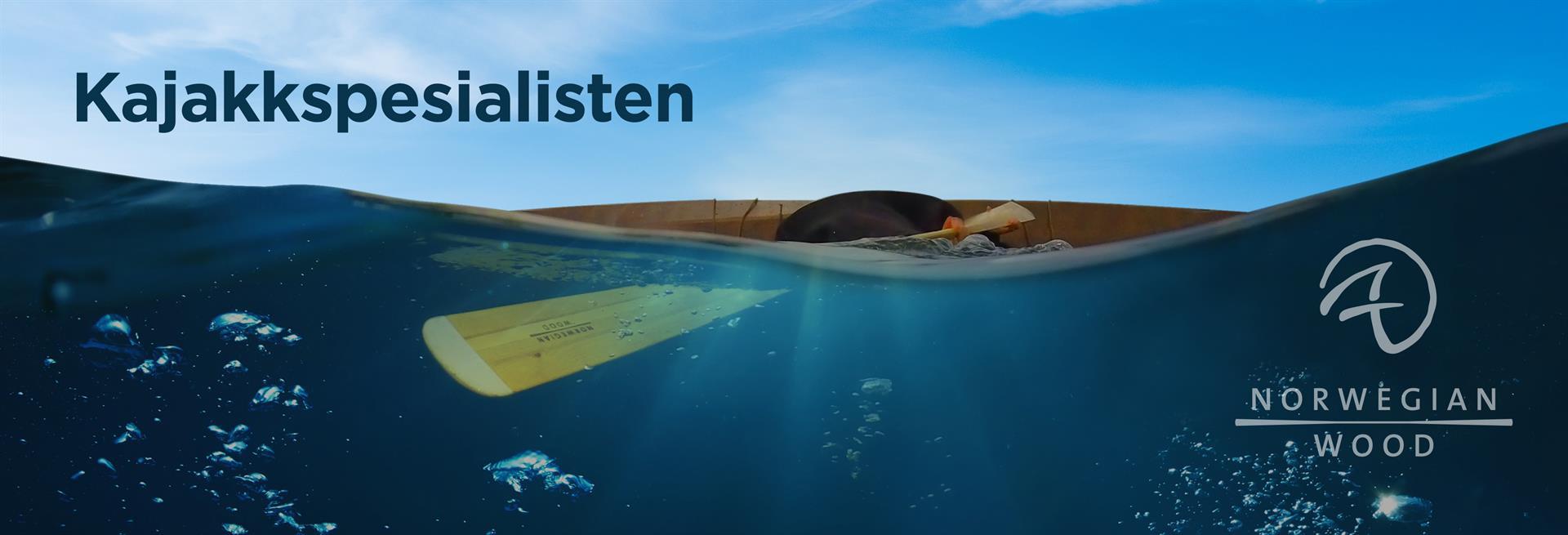Self rescue in a skin on frame kayak (the one with two paddles)
By Anders Thygesen.
The winter is here, and it means even more focus on safety for the ones out paddling kayak. It looks so easy when you see a paddler, dressed in tuilik and Greenland kayak, doing advanced rolls with his Greenland paddle. But. What if the roll doesn’t work? This can easily happen if it is cold, and that is when it is most critical to stay in the kayak. What if you have to get out of the kayak, into the cold water and swim? In this article, I want to focus on some general safety and self-rescue in a Greenland kayak. First of all, you need not only to be dressed for a swim but also prepared for it. The stress you experience when you end up in a new situation you are not prepared for can easily kill you! It can lead to you doing things wrong and forget skills you actually have learned. That's why you need to practice self-rescue in the situations you actually paddle.
These pictures were taken on a day with an air temperature of -15°C (5°F) and a water temperature of 3°C (37°F)! The flip and the first half-a-minute is usually the worst period when we talk about self-rescue in cold water. Everything should of course be routine you have practised in warmer water. It is important not to stress, but let your body get used to the cold water. Uncontrolled breaking is normal, and if you have a weak heart you should wear a drysuit or not paddle at all. No matter what, you should always have a helper nearby. Remain relaxed by the kayak until you have achieved some control over your breath. Then the worst part is over and the rest will most likely go well. The next phase of the self-rescue is uncomplicated. First, fasten your paddle under the deck rigging behind the cockpit. Then push the kayak around until you can get hold of your kayak on the opposite side. Try not to swim or make big movements with your body. Loosen your spare paddle and fasten it as an outrigger on this side before you move the kayak so you are all the way back by the afterdeck.
Now you are quite safe. The upper body is out of the water and your body has most likely started producing heat. Your wet clothes will quickly be heated by your body and considering the circumstance, you should be rather comfortable. Work yourself forward and put your leg into the cockpit. Slide into the cockpit and attach the splash guard or the tuilik to the cockpit. Then you can detach the outrigger paddles. Now you can resume paddling unless your hands fail you. I often struggle to keep my hands warm in the wintertime. You can try to blow them warm with your breath or you can pour yourself a cup of hot tea and warm your fingers on the cup. A chemical heating pad inside the paddling mittens can also be a good solution It is extremely important to practice this self-rescue often. You will notice it is very easy to do, and it works under any condition. You can also do it very quickly. Usually, it shouldn’t take more than 30 seconds to go from swimming in the water and till you are dry and safe inside your kayak again. Everybody should practice this kind of self-rescue in cold water at least once a year. It is very important so you don’t fool yourself into believing you are safe when you are not really so. Remember you can never trust Eskimo roll as a self-rescue technique 100%.
Preparing for a cold swim
The kayak in the picture is rigged with a rig for fastening 2 paddles as outriggers (make sure it doesn’t freeze solid). The spare paddle is easily reachable on the front deck. A deck line running lengthwise is attached to the kayak for the paddler to easily hold on to the kayak in case you end up in the water and need to swim.
Deck bag with thermos, food, beanie and mittens. A Sea sock is an absolute necessity. If you use the old type where the sea sock is fastened outside the cockpit with a bungee cord, a rubber strap outside the sea sock keeps it even better attached to the cockpit ring and gives an even better seal between cockpit and tuilik. No matter the old or the new type of sea sock, a thick sleeping pad on the bottom of the sea sock insulates and prevents the sea sock from collapsing and tangling with your paddling shoe. Inside the kayak, I have dry clothes, a bivouac sack, a down jacket and one more thermos filled with a hot, sweetened drink.
Self rescue step by step
I’m wearing thick neoprene with good wool underneath, PFD and tuilik on top of all that. Beanie and extra mittens are easily available in the kayak. A drysuit is even better underneath the tuilik.
First dip in the water. Relax and try to get control of your breathing.
The forist paddle is now placed safely under the deck rig and the paddler is getting ready to place the second paddle.
Both paddles are now placed under the deck rig on both sides of the kayak. This way the kayak is stable enough to climb back on.
Climbing on to the back deck. The paddles stabilizes the kayak very well.
Work yourself on to the kayak and into the cockpit. A typical grennland cockpit is smaler and therefore it takes a little bit of work to get there. The paddles work well as outriggers though.
Done. Let's go inside and put on something dry and warm. After a few paddlestrokes you will feel warmer, so try not to stay still.










